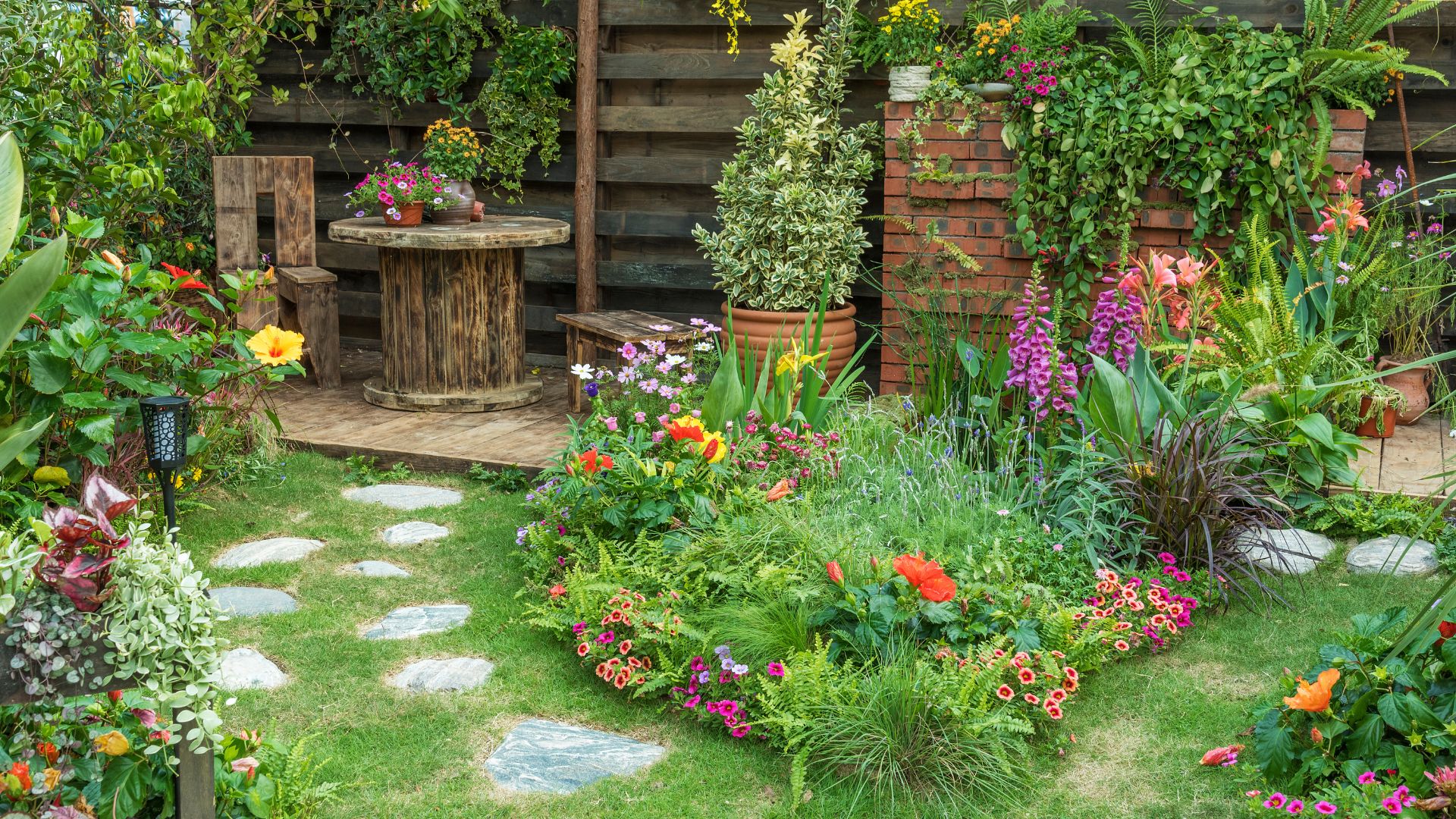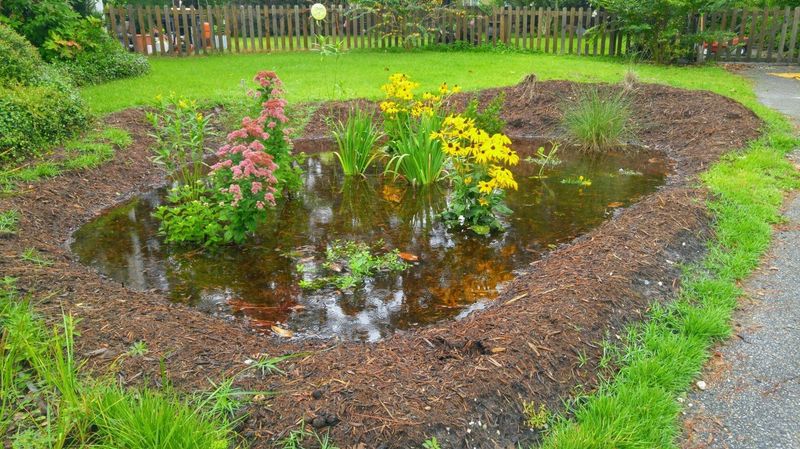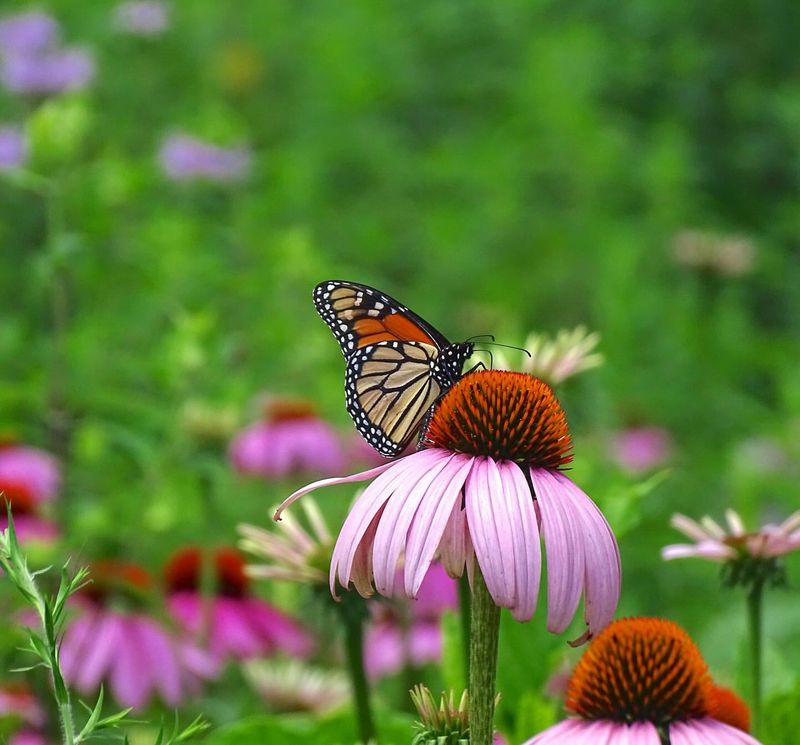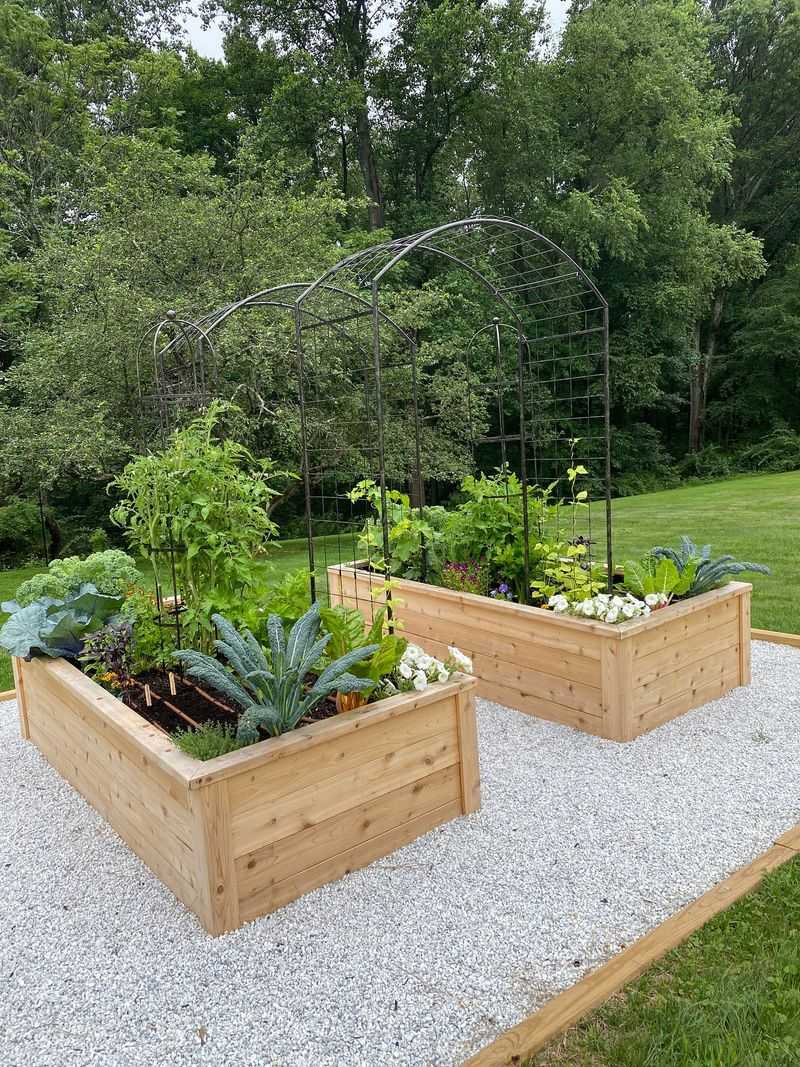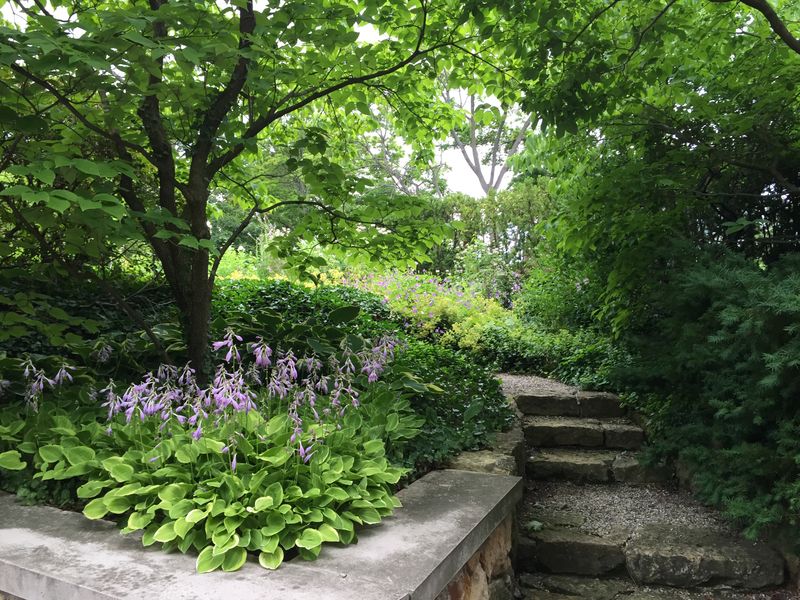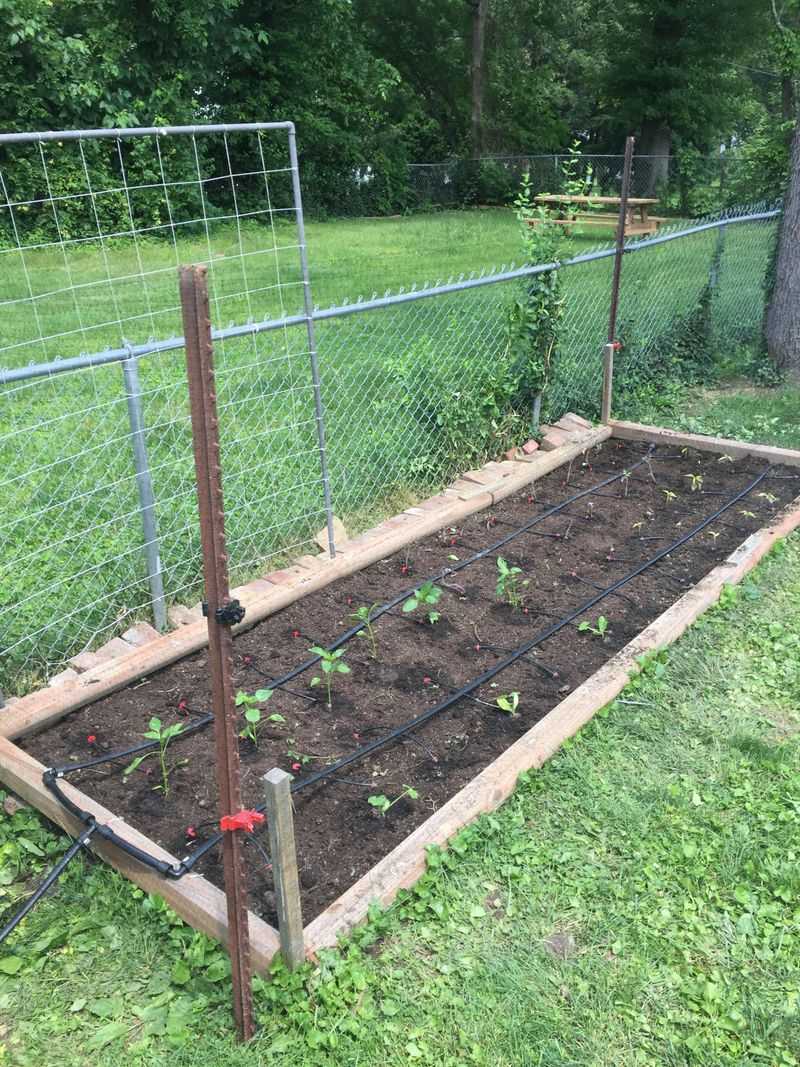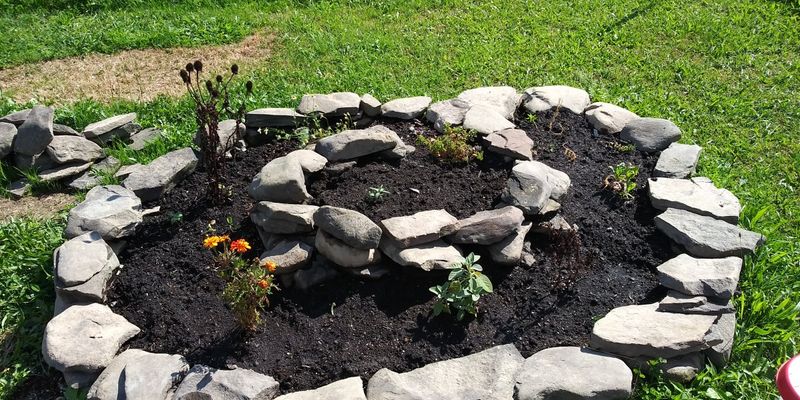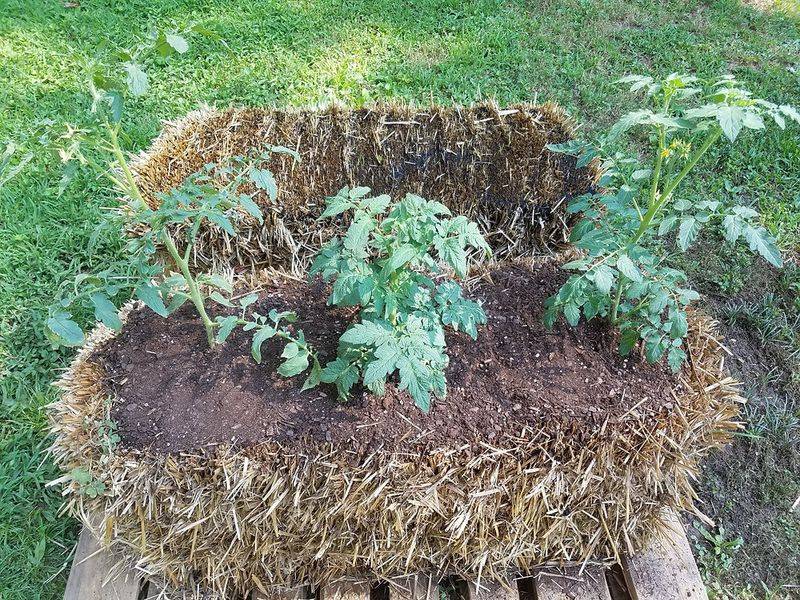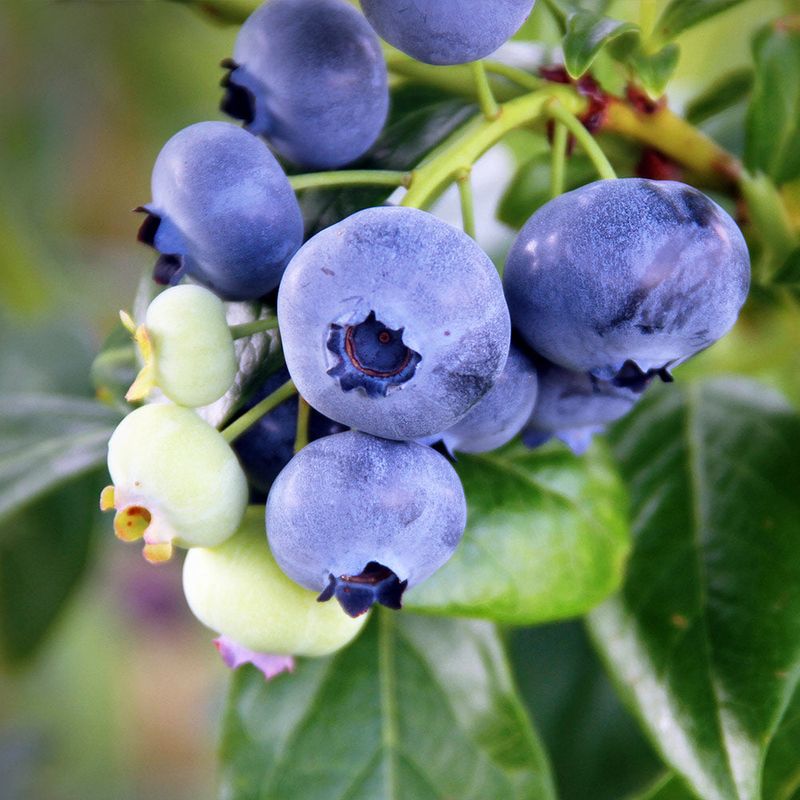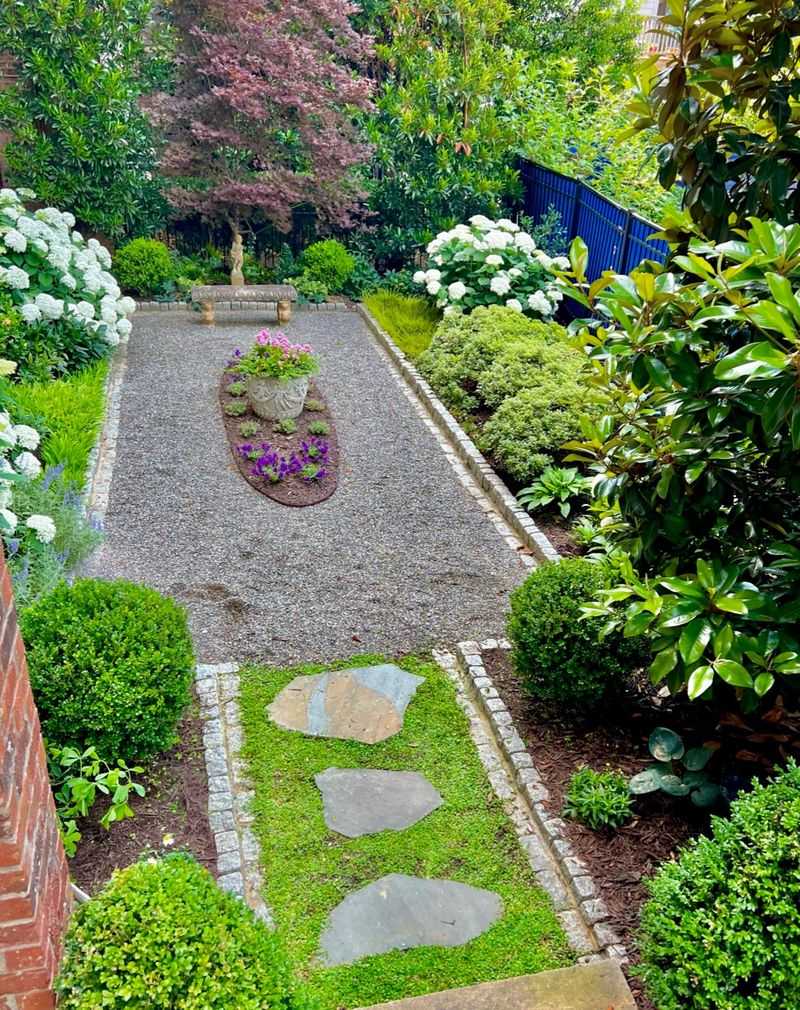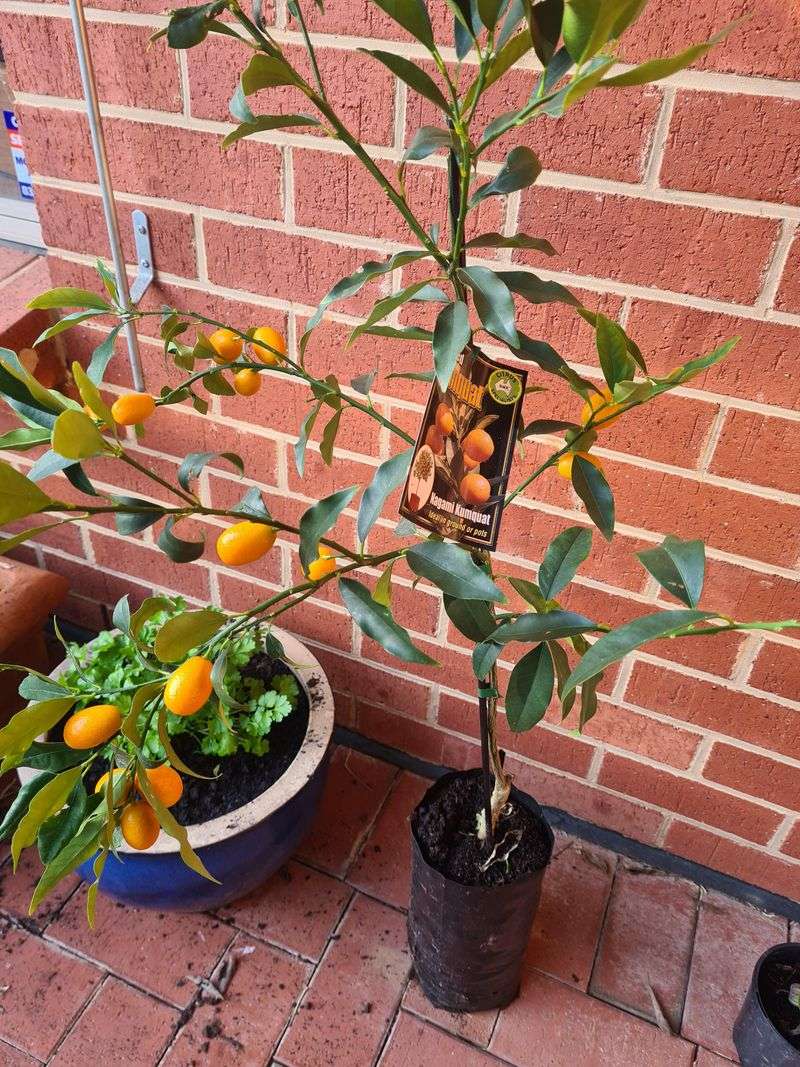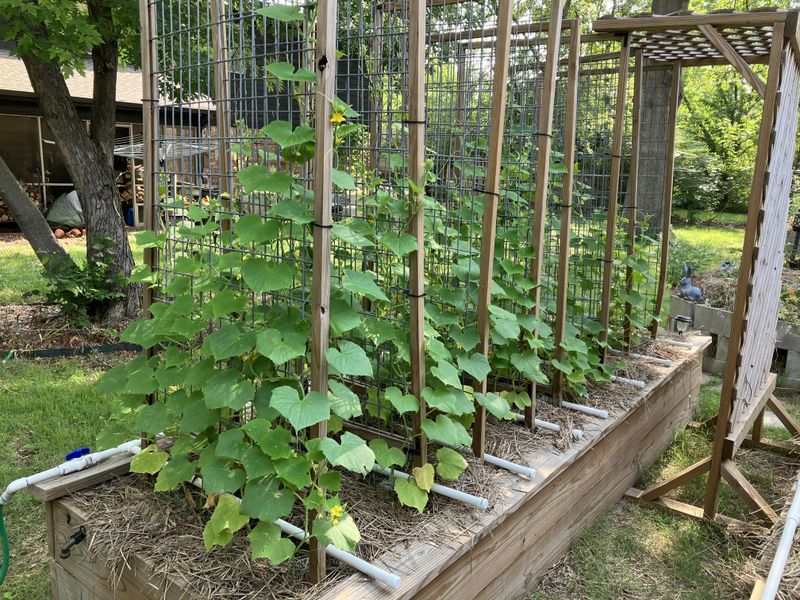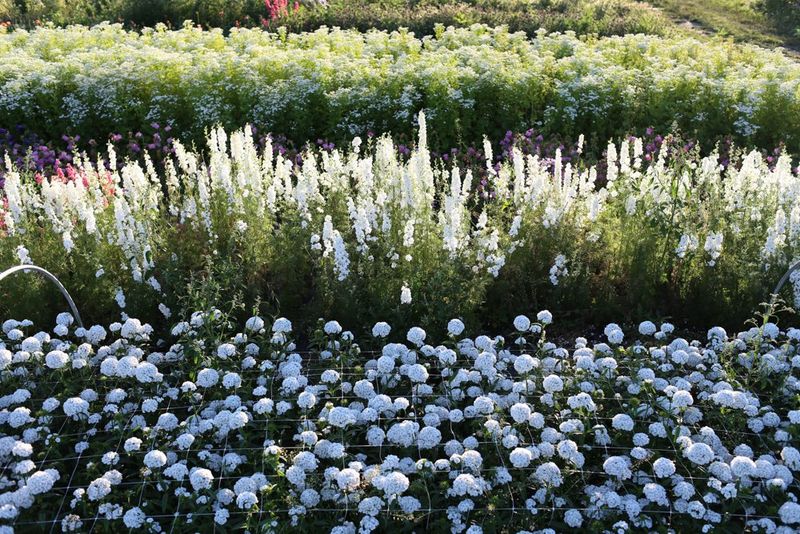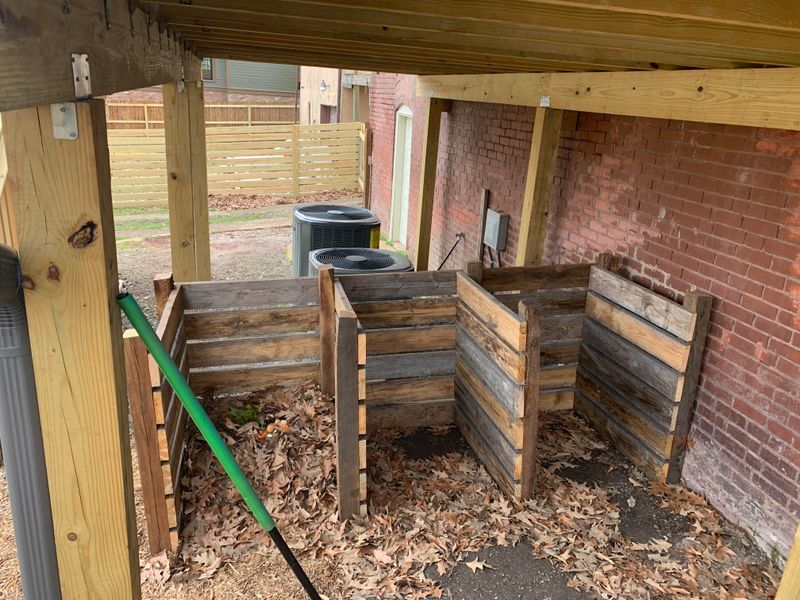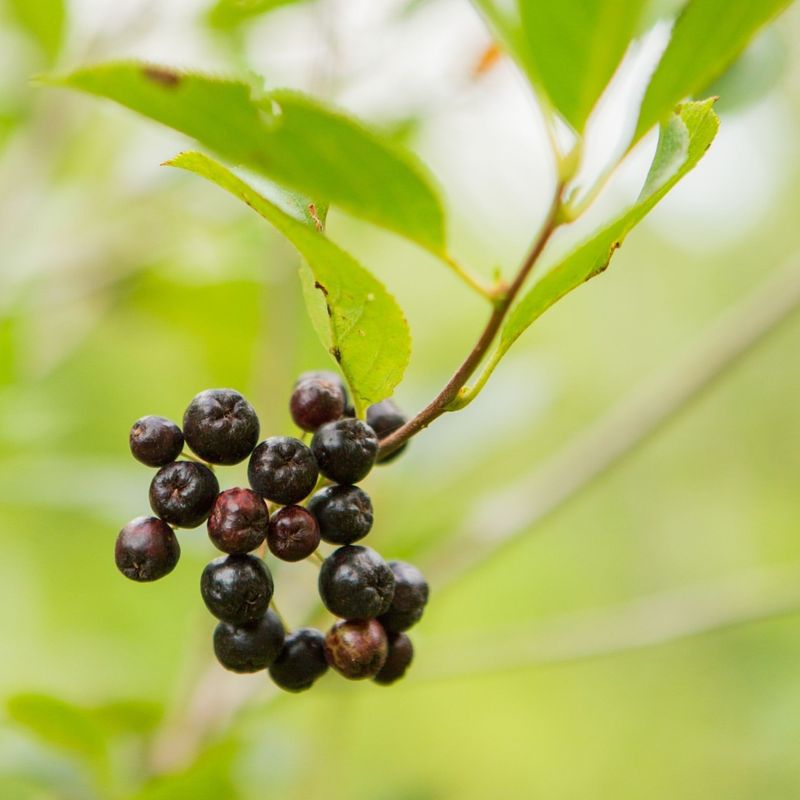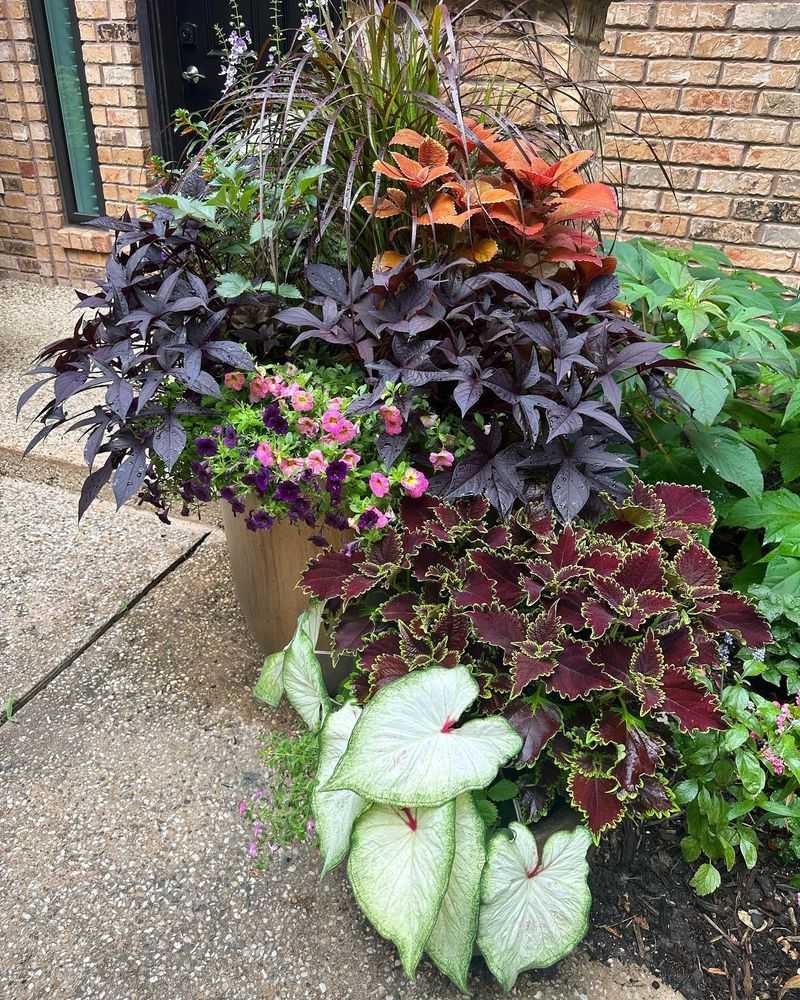Creating a thriving backyard garden in North Carolina means working with our unique climate challenges. From the humid summers that can wilt even the hardiest plants to our unpredictable spring weather, gardening here requires some regional know-how.
After struggling with my own Charlotte garden for years, I’ve discovered that success comes from embracing our long growing season while preparing for those intense July heat waves.
Whether you’re dealing with heavy clay soil in the Piedmont or sandy coastal conditions, these garden ideas are specifically tailored for North Carolina’s growing zones 6-8. They account for our rainfall patterns, pest challenges, and those glorious fall months when our gardens can shine brightest.
1. Create A Rain Garden For Storm Runoff
During those sudden summer thunderstorms, North Carolina yards can quickly become waterlogged. A rain garden uses this excess water as a resource rather than fighting it.
Position your rain garden in a natural low spot where water already collects. Native plants like Joe-Pye weed, cardinal flower, and switchgrass thrive in these conditions while helping filter runoff.
My neighbor’s rain garden transformed a perpetually muddy corner into the most colorful spot in her yard, and it significantly reduced erosion problems after heavy rains.
2. Plant A Native Pollinator Patch
The decline in butterfly and bee populations means our gardens can serve as vital habitat. Native plants require less maintenance since they’ve evolved to thrive in our specific conditions.
Black-eyed Susans, purple coneflower, and bee balm create a stunning display while supporting local wildlife. Group plants in clusters of at least three for maximum visual impact and to help pollinators find them easily.
Last summer, I replaced a struggling section of lawn with these natives and was amazed to count seven different butterfly species visiting regularly by August.
3. Build Raised Beds With Cedar Boards
North Carolina’s notorious clay soil can be a gardener’s nightmare. Raised beds allow you to create perfect growing conditions regardless of your natural soil type.
Cedar boards resist our humidity-driven rot far better than pine or composite materials. Keep beds narrow enough (4 feet maximum) to reach the center without stepping in, which compacts soil and reduces growth.
After switching to raised beds three years ago, my tomato harvest doubled, and I’ve been able to grow vegetables like carrots that previously failed in my heavy clay.
4. Establish A Shade Garden Under Mature Trees
Many North Carolina homes have beautiful mature trees that create challenging growing conditions. Rather than fighting the shade, embrace it with plants that thrive in dappled light.
Combine different textures with ferns, hostas, and heuchera for year-round interest. Add spring-blooming natives like Virginia bluebells and trillium for seasonal color before the tree canopy fully leafs out.
The shade garden under my oak tree has become my favorite retreat during hot summer afternoons when temperatures climb into the 90s.
5. Install A Drip Irrigation System
Our hot summers can quickly stress plants, but standing with a hose every evening gets old fast. Drip irrigation delivers water exactly where needed without wasting a drop.
Connect your system to a timer and rain sensor to maintain consistent soil moisture even during vacation. Focus water at plant roots rather than leaves to reduce fungal problems common in our humidity.
When I installed drip irrigation last year, my water bill dropped by 30% during summer months, and my plants showed noticeably less stress during July’s heat waves.
6. Design A Four-Season Herb Spiral
Herb spirals create multiple microclimates in a small footprint, perfect for North Carolina’s varied growing conditions. The spiral design provides excellent drainage while maximizing growing space.
Place Mediterranean herbs like rosemary and thyme at the sunny top where drainage is best. Use the shadier, moister bottom areas for mint and parsley that appreciate afternoon protection from our intense summer sun.
My three-foot-tall spiral provides fresh herbs year-round, with cold-hardy rosemary and sage continuing to produce even through mild Piedmont winters.
7. Grow Vegetables In Straw Bales
Straw bale gardening offers a perfect solution for our challenging clay soils without the construction work of raised beds. The decomposing straw creates heat that extends our already long growing season.
Condition bales with nitrogen fertilizer for two weeks before planting to start the decomposition process. Position bales with strings running parallel to the ground to prevent them from falling apart too quickly.
Growing cucumbers in straw bales kept them elevated off the ground, which virtually eliminated the downy mildew problems I’d struggled with in previous seasons.
8. Add A Blueberry Hedge Along Property Lines
Blueberries thrive in North Carolina’s acidic soils and provide both beautiful landscaping and delicious fruit. Different varieties can extend your harvest from late May through August.
Plant multiple varieties for cross-pollination and better yields. Rabbiteye blueberries are especially well-suited to our hot summers and can reach 6-8 feet tall, making them perfect for property boundaries.
The blueberry hedge along my driveway produces enough berries for fresh eating plus freezing, and the red fall foliage rivals any ornamental shrub for seasonal color.
9. Create Gravel Garden Paths For Drainage
Our heavy summer downpours can turn garden paths into muddy messes. Gravel paths with proper underlayment solve this problem while adding structure to your garden design.
Excavate paths 4-6 inches deep, add landscape fabric to block weeds, then fill with crushed stone or pea gravel. Edge paths with brick or steel to keep materials contained and create clean lines.
Adding these paths between my garden beds eliminated the muddy shoe problem after rain and made it much easier to work in the garden without compacting soil around plants.
10. Incorporate Dwarf Fruit Trees In Containers
Growing fruit in North Carolina can be challenging due to late frosts and pest pressure. Dwarf fruit trees in containers offer flexibility to protect trees during weather extremes.
Choose self-pollinating varieties like ‘Elberta’ peach or ‘Fuji’ apple grafted onto dwarf rootstock. Use large containers (at least 20 gallons) with drainage holes and high-quality potting mix.
Moving my potted fig tree to a protected spot during a late April frost saved an entire season’s worth of fruit that would have been lost had it been planted in the ground.
11. Set Up A Vertical Growing Wall For Vegetables
Limited space doesn’t mean limited harvests. Vertical gardening maximizes production while improving air circulation – crucial for preventing fungal diseases in our humid climate.
Attach cattle panels or sturdy trellises to posts or fence sections. Plant vining crops like cucumbers, beans, and small-fruited squash at the base, training them upward as they grow.
The cucumber plants on my vertical trellis produced twice as many fruits as those grown on the ground, and harvesting was much easier on my back since everything hung at eye level.
12. Establish A Cut Flower Border
North Carolina’s long growing season is perfect for maintaining a steady supply of cut flowers from spring through fall. A dedicated cutting garden keeps your home beautiful without depleting landscape plantings.
Combine reliable performers like zinnias and cosmos with specialty flowers such as dahlias and lisianthus. Succession plant every 2-3 weeks for continuous blooms through our extended growing season.
My small 4’x8′ cutting bed provides fresh bouquets from April through October, saving hundreds of dollars I would have spent on store-bought flowers.
13. Build A Simple Compost System
Our long growing season produces abundant yard waste that can become garden gold. A three-bin system allows for continuous composting throughout the year.
Construct bins using pallets or hardware cloth attached to wooden posts. Keep one bin for fresh materials, one for actively decomposing compost, and one for finished compost ready to use.
Since building my compost system two years ago, I haven’t purchased a single bag of fertilizer or soil amendment, and my plants have never looked healthier.
14. Plant A Wildlife Hedge With Berry-Producing Shrubs
North Carolina’s abundant wildlife can become garden allies rather than enemies. A mixed hedge of native berry-producing shrubs provides food and habitat while creating privacy.
American beautyberry, elderberry, and aronia create a stunning display through multiple seasons. The berries attract birds that help control insect populations, creating a balanced ecosystem in your yard.
After adding these native shrubs along my back fence, I’ve noticed significantly fewer pest problems in my vegetable garden and enjoy watching cardinals and bluebirds visit year-round.
15. Design A Year-Round Container Display
Containers allow you to garden in challenging spots and add color where needed. In North Carolina, containers can shine 12 months a year with proper plant selection.
Use large containers (at least 14 inches diameter) that won’t dry out quickly in summer heat. Combine evergreen structural plants with seasonal bloomers that can be swapped out as needed.
The large containers flanking my front steps transition seamlessly through the seasons—daffodils and pansies in spring, coleus and caladiums in summer, mums in fall, and dwarf conifers with red twig dogwood in winter.

